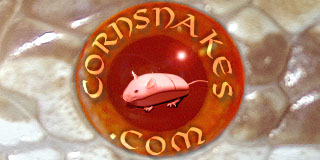Cromwell
New member
Hello,
I'm interested in opinions and facts about the right heating lamp for my future setup!
I will begin by giving some back ground information about the environment. The tank will be placed in large open room with an average temperature of 55-70f. During the night is when the temperature will do a dip. Usually, the room never goes over 70f, unless of course its the summer. The tank for the snake will be 48'' X 12'' X 12''. Aspen substrate, maybe some slate or large rocks and of course and good hiding place.
My questions:
1. Is this an adequate set up? What would u change?
2. What heat lamp fixture should i buy? what bulb and specific wattage is required for a tank in a room such as mine?
3. As I discussed before, the room gets cool at night, would it get to cool if i turned the light off at night?
4. What is the proper light cycle i should follow? i realize that Corn snakes are nocturnal. Basically, what is the maximum duration the light should be on for?
5. The room gets massive amounts of natural light, so i grow plants in this room. Could i grow plants in pots in the tank with the snake?
**I have read the stickies, but i still want opinions on everything i have discussed. Thank you!**
I'm interested in opinions and facts about the right heating lamp for my future setup!
I will begin by giving some back ground information about the environment. The tank will be placed in large open room with an average temperature of 55-70f. During the night is when the temperature will do a dip. Usually, the room never goes over 70f, unless of course its the summer. The tank for the snake will be 48'' X 12'' X 12''. Aspen substrate, maybe some slate or large rocks and of course and good hiding place.
My questions:
1. Is this an adequate set up? What would u change?
2. What heat lamp fixture should i buy? what bulb and specific wattage is required for a tank in a room such as mine?
3. As I discussed before, the room gets cool at night, would it get to cool if i turned the light off at night?
4. What is the proper light cycle i should follow? i realize that Corn snakes are nocturnal. Basically, what is the maximum duration the light should be on for?
5. The room gets massive amounts of natural light, so i grow plants in this room. Could i grow plants in pots in the tank with the snake?
**I have read the stickies, but i still want opinions on everything i have discussed. Thank you!**
